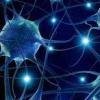NVM the trivastal, it appears to be a partional agonist, wich explains the lack of side effects but would also mean its far from as effective as prami.
Better to stay on prami.
Differential actions of antiparkinson agents at multiple classes of monoaminergic receptor. II. Agonist and antagonist properties at subtypes of dopamine D(2)-like receptor and alpha(1)/alpha(2)-adrenoceptor.
Newman-Tancredi A, Cussac D, Audinot V, Nicolas JP, De Ceuninck F, Boutin JA, Millan MJ.
Department of Psychopharmacology, Institut de Recherches Servier, Centre de Recherches de Croissy, 125 chemin de Ronde, 78290 Croissy/Seine, Paris, France.
The accompanying multivariate analysis of the binding profiles of antiparkinson agents revealed contrasting patterns of affinities at diverse classes of monoaminergic receptor. Herein, we characterized efficacies at human (h)D(2SHORT(S)), hD(2LONG(L)), hD(3), and hD(4.4) receptors and at halpha(2A)-, halpha(2B)-, halpha(2C)-, and halpha(1A)-adrenoceptors (ARs). As determined by guanosine 5'-O-(3-[(35)S]thio)triphosphate ([(35)S]GTPgammaS) binding, no ligand displayed "full" efficacy relative to dopamine (100%) at all "D(2)-like" sites. However, at hD(2S) receptors quinpirole, pramipexole, ropinirole, quinerolane, pergolide, and cabergoline were as efficacious as dopamine (E(max)100%); TL99, talipexole, and apomorphine were highly efficacious (79-92%); piribedil, lisuride, bromocriptine, and terguride showed intermediate efficacy (40-55%); and roxindole displayed low efficacy (11%). For all drugs, efficacies were lower at hD(2L) receptors, with terguride and roxindole acting as antagonists. At hD(3) receptors, efficacies ranged from 33% (roxindole) to 94% (TL99), whereas, for hD(4) receptors, highest efficacies (approximately 70%) were seen for quinerolane, quinpirole, and TL99, whereas piribedil and terguride behaved as antagonists and bromocriptine was inactive. Although efficacies at hD(2S) versus hD(2L) sites were highly correlated (r = 0.79), they correlated only modestly to hD(3)/hD(4) sites (r = 0.44-0.59). In [(35)S]GTPgammaS studies of halpha(2A)-ARs, TL99 (108%), pramipexole (52%), talipexole (51%), pergolide (31%), apomorphine (16%), and quinerolane (11%) were agonists and ropinirole and roxindole were inactive, whereas piribedil and other agents were antagonists. Similar findings were obtained at halpha(2B)- and halpha(2C)-ARs. Using [(3)H]phosphatidylinositol depletion, roxindole, bromocriptine, lisuride, and terguride displayed potent antagonist properties at halpha(1A)-ARs. In conclusion, antiparkinson agents display diverse agonist and antagonist properties at multiple subtypes of D(2)-like receptor and alpha(1)/alpha(2)-AR, actions, which likely contribute to their contrasting functional profiles.























































